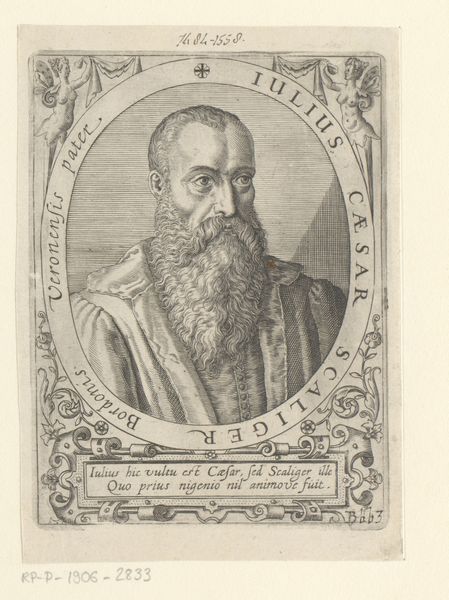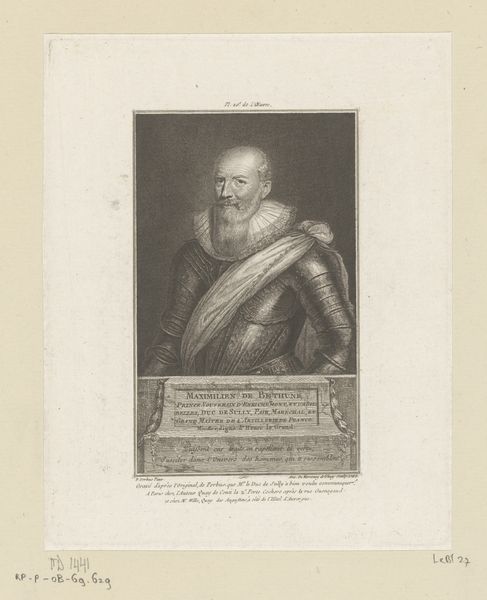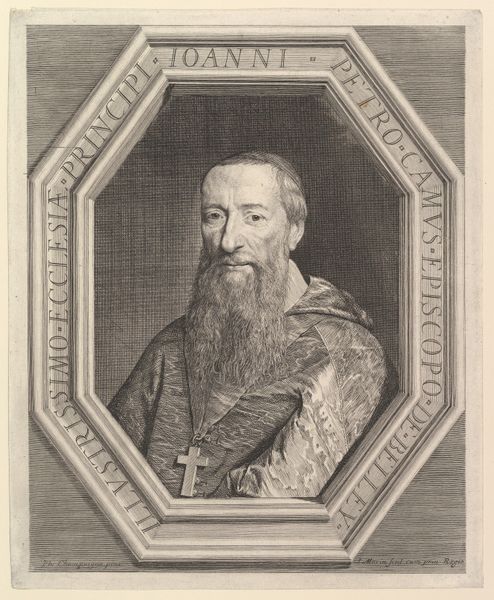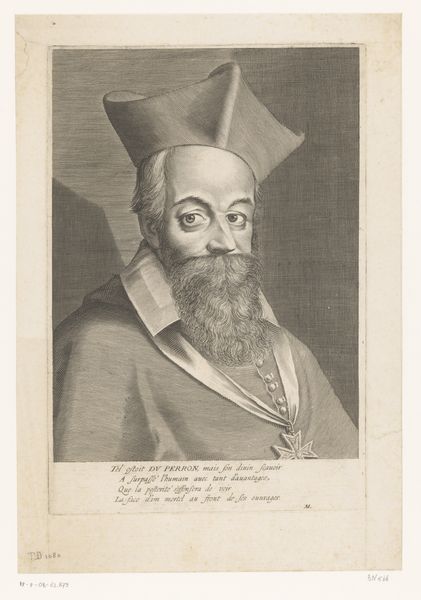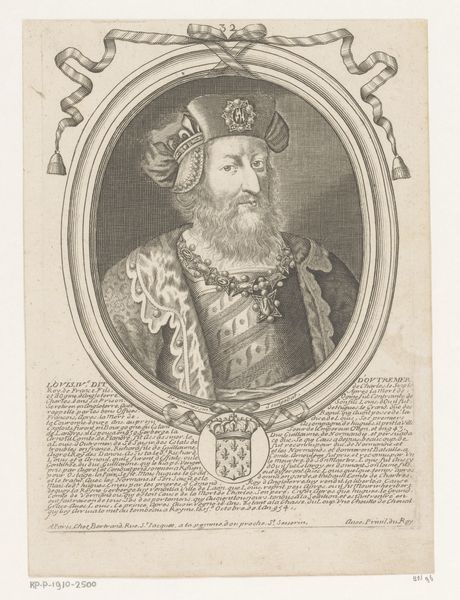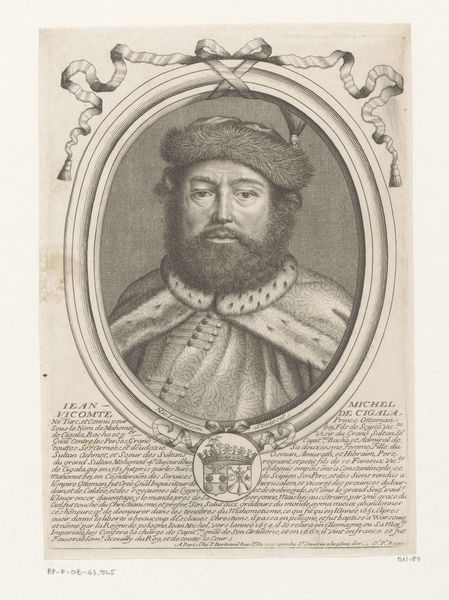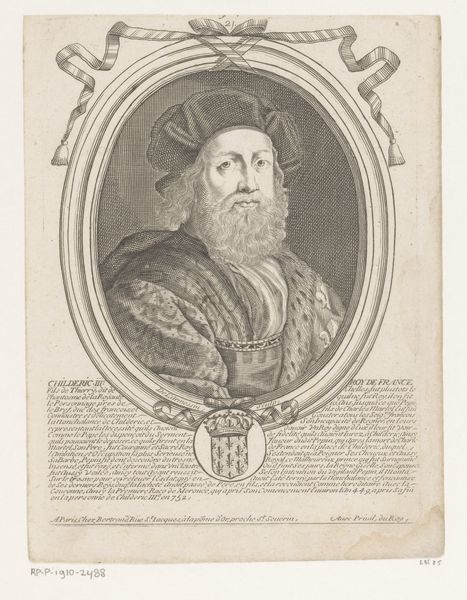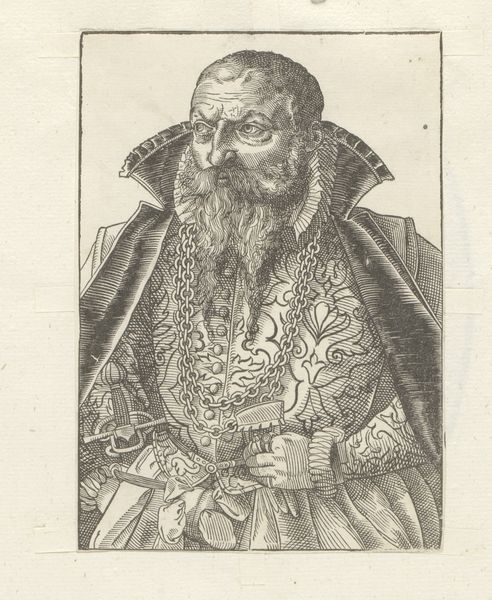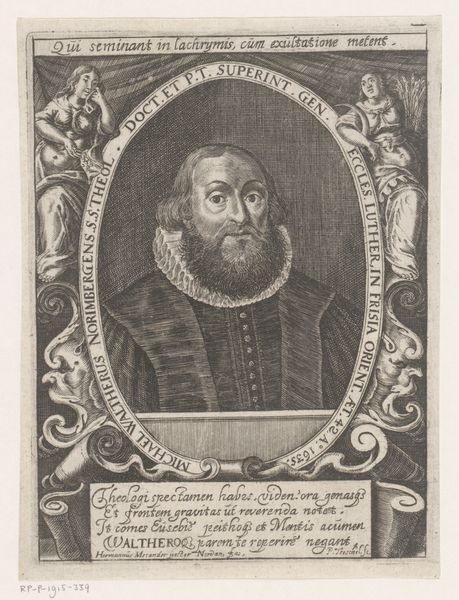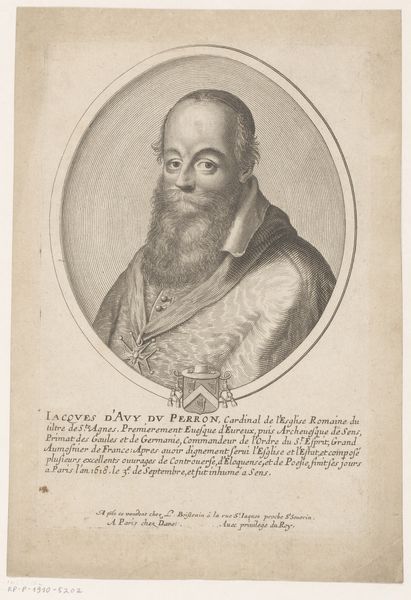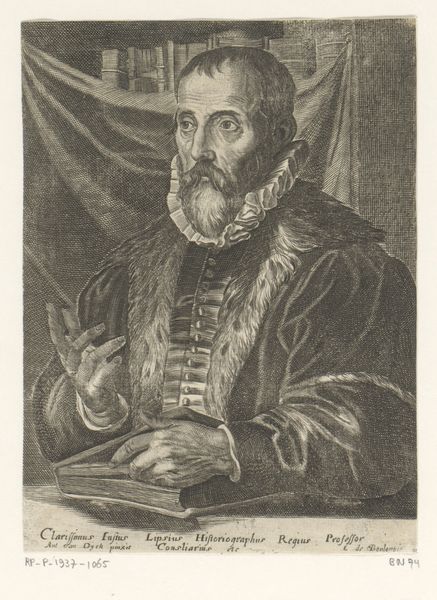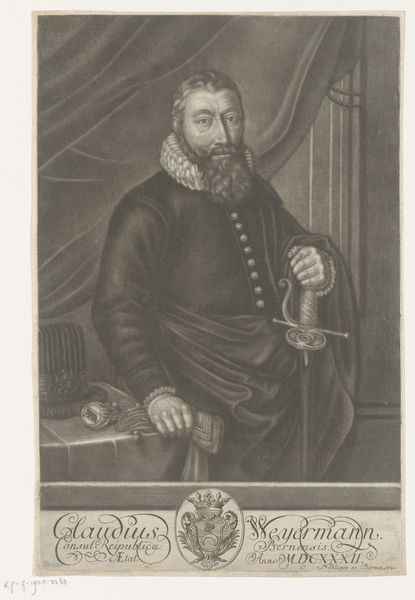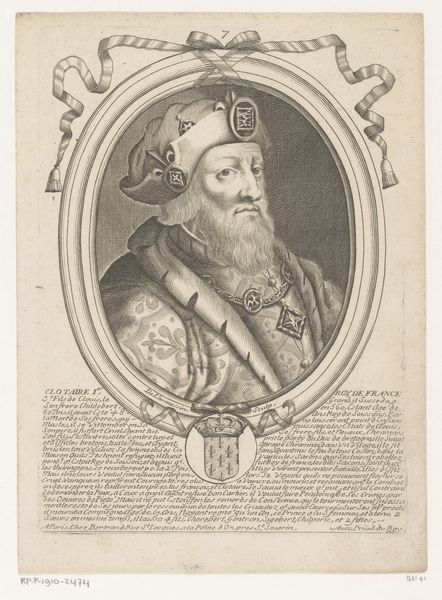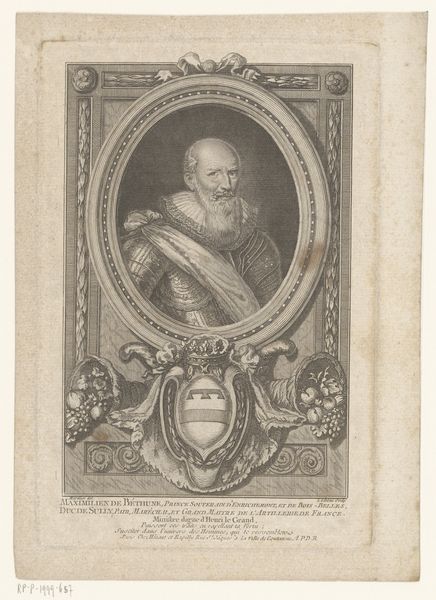
drawing, print, etching, engraving
#
portrait
#
drawing
#
baroque
# print
#
etching
#
line
#
engraving
Dimensions: Sheet (Trimmed): 14 in. × 10 5/8 in. (35.6 × 27 cm)
Copyright: Public Domain
This portrait of Maximilien de Béthune, Duc de Sully, was made by Jacob Matham around the turn of the 17th century, using engraving. This meticulous process involves incising an image onto a metal plate, inking the plate, and then pressing it onto paper. Look closely, and you can see the thousands of tiny lines that make up the image. The density and direction of these lines create the illusion of light, shadow, and texture. Consider the sheer labor involved in creating such a detailed image. Each line is a physical mark, a testament to the artist's skill and patience, and the number of prints that could be created with it. Engraving was a key technology for disseminating images and ideas in early modern Europe. It allowed for the mass production of visual information, contributing to a wider circulation of knowledge and artistic styles. The fact that this portrait could be reproduced and distributed speaks to the growing importance of print culture during this period. So, next time you look at an engraving, remember to think about the skilled labor and the social context that made it possible. It's a reminder that art is not just about aesthetics; it's also about the materials, processes, and social forces that shape its creation and reception.
Comments
No comments
Be the first to comment and join the conversation on the ultimate creative platform.
